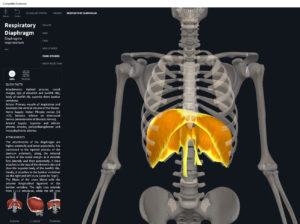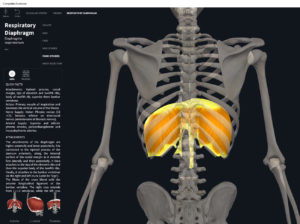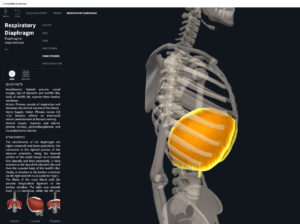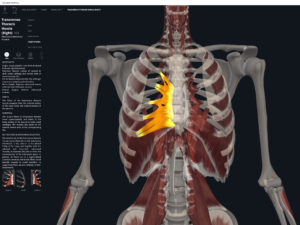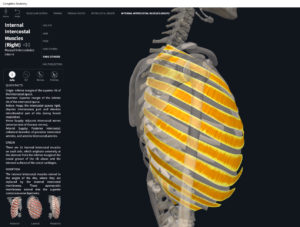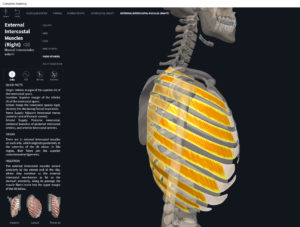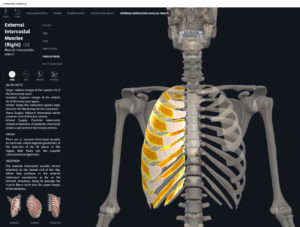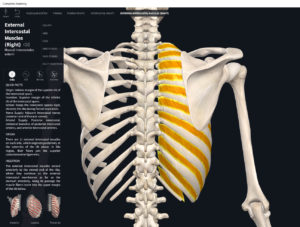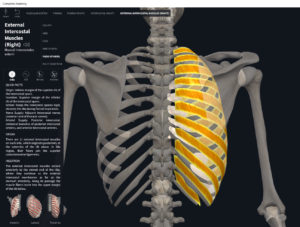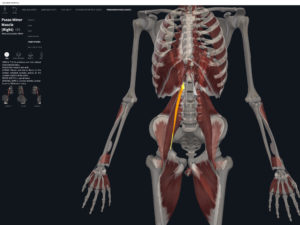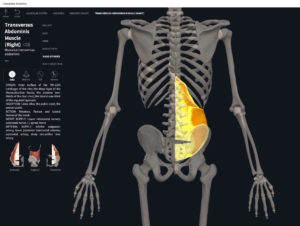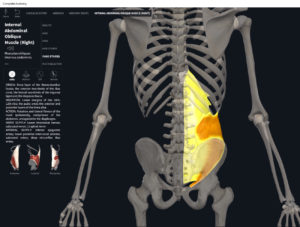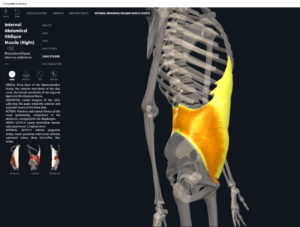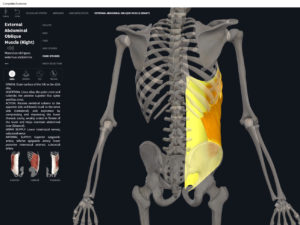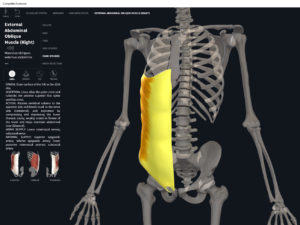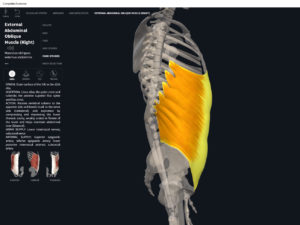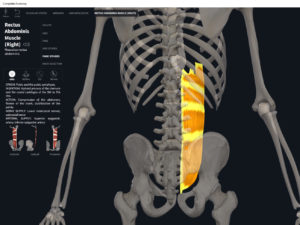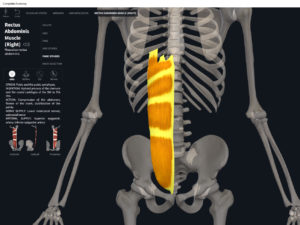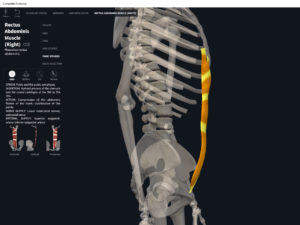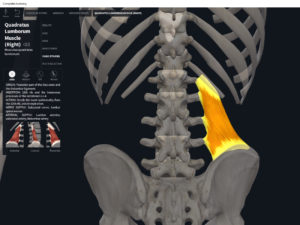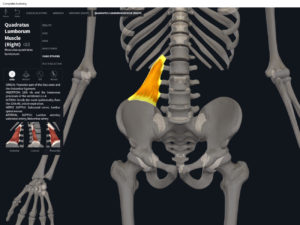Anatomy & Physiology: Muscles—Diaphragm.
Structure.
- Origin: costal region– inner surfaces of cartilages and adjacent bony regions of ribs 6-12; sternal region–posterior side of xiphoid; crural (lumbar region)–2 aponeurotic arches covering external surfaces of the quadratus lumborum and psoas major; right & left crus–from bodies of L1-L3 and their intervertebral discs.
- Insertion: central tendon.
Function.
- Concentric action: pull central tendon inferiorly, increase thoracic cavity volume vertically (resulting in inhalation).
- Reverse mover action: increase thoracic cavity volume.
- Eccentric action: controls/restrains/slows thoracic cavity compression.
- Isometric action: stabilization of trunk.
- Innervation: phrenic nerve, C3-C5.
- Arterial supply: branches of aorta and internal thoracic artery; superior and inferior phrenic arteries, musculophrenic and pericardiacophrenic arteries.
Clinical Significance.
More.
- https://youtu.be/UBYB3PtB2jY
- https://www.youtube.com/watch?v=4LMjl68ezPA
- https://youtu.be/23-KAubf-js
- https://youtu.be/kgTL5G1ibIo
References
Biel, A. (2015). Trail guide to the body: A hands-on guide to locating muscles, bones and more.
Cedars-Sinai. (2018). Vertebrae of the spine. Retrieved from https://www.cedars-sinai.org/health-library/diseases-and-conditions/v/vertebrae-of-the-spine.html
Clark, M., Lucett, S., Sutton, B. G., & National Academy of Sports Medicine. (2014). NASM essentials of corrective exercise training. Burlington, MA: Jones & Bartlett Learning.
Jenkins, G., & Tortora, G. J. (2012). Anatomy and Physiology: From Science to Life, 3rd Edition International Stu. John Wiley & Sons.
Muscolino, J. E. (2017). The muscular system manual: The skeletal muscles of the human body.
